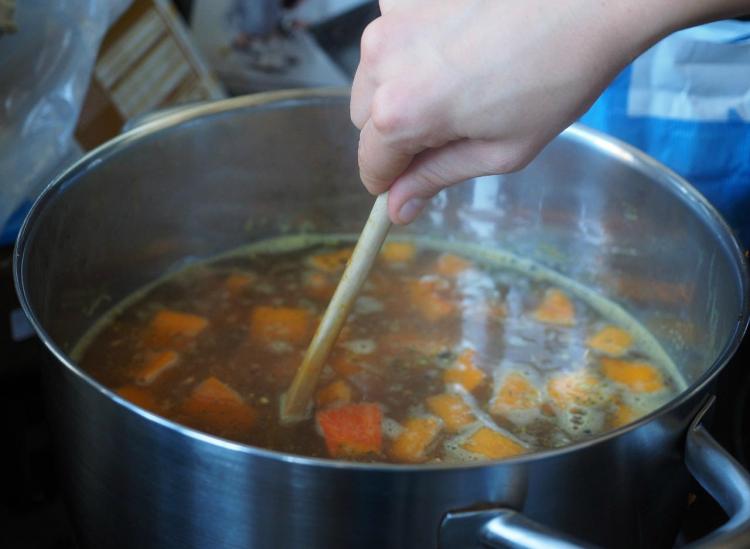Bone Broth Is Your New Favorite Superfood

Pixabay
When you think of foods that boost your immune system, there’s always citrus fruits, ginger, garlic, nuts and especially probiotics, but the last thing you might expect is the popular paleo drink, bone broth. Many culinary traditions around the world are based around whole-animal butchery. This often involves using bones for their rich flavor, nutrients and healing properties. Asian culinary traditions involve using fish and fish bones as a stock base and in Korean cuisine, beef bones are popular in soups like Seolleongtang (Ox bone soup).
To make this nutritious broth at home, you can use every part of the animal (neck, knuckles, bones, marrow, skin, feet, tendons) and bones are pretty cheap at any butcher shop — you’ll get the most nutritional value if the bones are from grass-fed animals. Add in any vegetables you have in your kitchen (carrots, leeks, onions, garlic), and any herbs or spices. Pour in enough water so the bones are completely covered and simmer for at least six hours and a maximum of 48 hours. Keep in mind, beef bones can hold up way longer than chicken bones and the longer you simmer, the richer the flavor.
As the bones simmer they release healing compounds and minerals that can be easily absorbed, like calcium, magnesium, phosphorus, and sulphur. You can use bone broth to help with food allergies, joint health, reduce cellulite, boost your immune system and to treat leaky gut syndrome.
The savory liquid has become so trendy that there’s a whole restaurant in Manhattan, Brodo, dedicated to all types of bone broth varieties, where you can sip on the tasty broth like it’s tea and easily reap the health benefits. In an article by Munchies, Brodo owner Marco Canora stresses the importance of good broth versus bad broth and says, “not all broths are created equal. The vast majority of broth you buy at grocery stores is shelf-stable at room temperature.” Any type of broth that’s stable at room temperature is most likely filled with preservatives, so be careful where your bone broth is coming from. You’re better off just making your own! All you need is some free time, patience, and a large stock pot.











